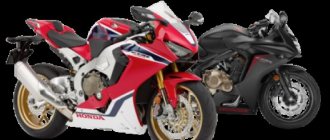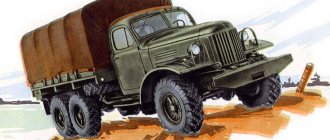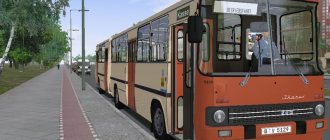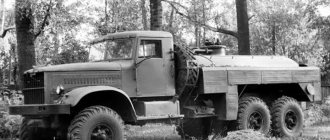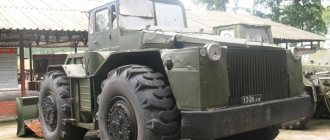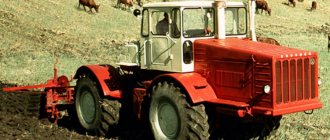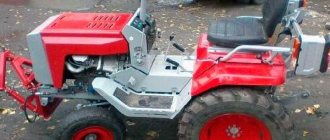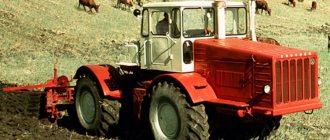The MTZ-80 tractor is a unique machine with a wide range of work. Despite its advanced age, 40 years, it is in high demand among farmers and utility organizations. The price of equipment produced by the Minsk Tractor Plant remains affordable, and the quality surprises many: MTZ-80/82 tractors work flawlessly for years in completely different climatic conditions.
In the fourth quarter of 1973, 21 MTZ-80 tractors were assembled, in 1974 - 80, by the end of 1975, MTZ production of all modifications reached 14,250 units per year. The first above-plan tractor "Belarus" MTZ-80 rolled off the main assembly line on January 21, 1975. At the same time, the previous model, MTZ-50/52, which became the basis of the new tractor, was not removed from the factory assembly line for many years - this is how consumers of MTZ products appreciated the excellent performance qualities of these machines.
In terms of such indicators as productivity, versatility, scope, specific material consumption, structural weight, operator working conditions, the MTZ-80 tractor was at the high global technical level of its time.
In the 1960s, due to the focus on performing agricultural work at high speeds, up to 9-15 km/h, the need arose for more powerful equipment. By modernizing the MTZ-50 tractor, MTZ designers created a tractor with a power of 75-80 hp. With. traction class 1.4 and assigned it the MTZ-80/82 brand. The MTZ-80 tractor has only rear-wheel drive, and the MTZ-82 has all-wheel drive. Many improvements were made to the design of the basic models, MTZ-50 and MTZ-52. The main one is the modernization of the D-50 engine in order to increase its power to 75-80 hp. With.
Tractor "KD-35"
0
Source:
See all photos in the gallery
November 4, 1950 was noted in the chronicle of the labor exploits of Belarusian tractor builders as the day the serial production of KD-35 tractors began. The first-born of Minsk tractor builders enjoyed great and well-deserved success among field workers. The KD-35 tractors were equipped with 4-cylinder diesel engines producing 37 hp. the engine was distinguished by significant efficiency. Thus, for one hectare of plowing under average conditions, it consumed 13 kg of fuel. The tractor's fuel tank contained fuel for 10 hours of uninterrupted operation. Prototypes of the machine plowed up to 6 hectares of land in 10 hours. The tractor was not produced by the plant for long, only 9 months, until August 1951. During this time, 406 cars rolled off the assembly line. The production of diesel and starting engines for the KD-35 at the plant did not stop. They were supplied to the Lipetsk Tractor Plant. Subsequently, this engine was used on a wheeled universal row-crop tractor, on which factory designers had been working since 1948.
MTZ-1 and MTZ-2
0
Source:
The Belarus universal wheeled tractor was designed to work with mounted, semi-mounted and trailed agricultural machines. The design of the tractor was made in two modifications: MTZ-2 - for inter-row cultivation of low-stem crops with matching tracks of the front and rear wheels and MTZ-1 - for processing high-stem crops with close front wheels. The tractor was designed to operate on two wheels: low-pressure rubber cylinders and wheels with a rigid steel rim with spurs. The tractor had an independent power take-off shaft drive, a hydraulic system for lifting mounted implements, and was equipped with a removable adjustable tow hitch. July 18, 1949 became a significant day for all tractor manufacturers. The first Belarusian factory-designed wheeled tractor emerged from the gates of the experimental workshop. A prototype of a wheeled tractor subsequently became the basis for the creation of the MTZ-2 serial machine. In 1949, 7 prototypes were produced and underwent lengthy factory tests. A historical date for the plant’s staff was 1953, when on October 14, the assembly of the MTZ-1 and MTZ-2 tractors, created by the plant’s designers, was completed on the main conveyor. These machines determined the entire further specialization of the plant in the production of wheeled universal row-crop tractors.
×
0
Source:
Half-track and 8-wheel tractor
An effective means of increasing the cross-country ability of tractors of the MTZ family is to install on them a so-called “half-track”, which consists of two rubber-metal tracks and two sets of tensioning devices. The caterpillar, in turn, covers the drive wheels, as well as installed additional tension wheels.
The half-track installation looks like this:
- A balancer with a tension wheel is assembled.
- The drive and guide wheels of the tractor are installed on the track.
- The tractor step is removed.
- Tensioners are installed.
- Spring shock absorbers are located.
- The half-track tension wheels are installed to the track size, which must be equal to the track of the tractor wheels.
- The tracks are stretched by lugs onto the ground so that the location of the bosses on them coincides with the direction of the tread pattern of the tires of the driving wheels of the tractor.
- The wheels are covered with tracks.
- The tire pressure of the tractor wheels is checked (it should be 0.137 MPa for the rear wheels and 0.216 MPa for the tension wheels) and the track tension is adjusted.
8-wheel tractor MTZ-3522
Another option to increase the tractor's maneuverability and reduce its pressure on the ground is to convert the equipment to an eight-wheel base. This modification is best carried out in a specialized center.
KT-12 and KT-12A
0
Source:
In the spring of 1951, the MTZ team received a very important government task - to master the production of skidders, which were in great demand in the logging industry. The KT-12 gas generator tractor is a special tracked vehicle designed for forest skidding. It appeared in the USSR in the first post-war years. There were no analogues to it in any country in the world. Previously, skidding was carried out by horse-drawn vehicles, manual or mechanical winches. The KT-12 tractor was created by designers of the Kirov plant in Leningrad in collaboration with scientists from the Leningrad Forestry Academy. The KT-12 tractor was produced at the Kirov plant until 1951. Now it was necessary to establish its production at the Minsk Tractor Plant. Only three months were allotted to resolve all organizational issues. So, in the short history of its existence, MTZ had to develop a second (after the KD-35) machine, and, moreover, not of its own design. On August 15, 1951, the first batch of KT-12 skidding machines rolled off the main conveyor of the tractor assembly shop. During the production process, the tractor underwent modernization aimed at improving the performance of the machine. In a short period of time, factory designers, by changing a number of components and parts, increased the warranty period of the machine by 1.5 times.
TDT-40
0
Source:
In the early 50s, the USSR Ministry of Forestry Industry stated that the KT-12A with its gas generator installation did not meet the increased requirements. Considering the disadvantages of the tractor, the ministry decided to abandon this machine altogether and raised the question of creating a new, more reliable skidder with a power of 60 hp instead. Having analyzed the situation, the designers and management of MTZ recognized the feasibility of creating a more powerful skidder, but also expressed the opinion that one powerful class of tractor for all zones in all forestry operations would be uneconomical. It was necessary to design a medium-power skidder that could be created on the basis of the KT-12A by installing a diesel engine of a Belarus wheeled tractor on it. In 1954, they developed the design of such a tractor, giving it the brand TDT-40. The tractor was intended for transporting logs directly from the cutting area. In addition to timber skidding, it was indispensable in logging and in all kinds of transport work in off-road conditions. Based on the results of operational tests in 1955, the interdepartmental commission stated that the TDT-40 tractor was very necessary for the USSR Ministry of Forestry Industry and it was advisable to establish its production in a short time. By decision of the USSR Ministry of Tractor and Agricultural Engineering, serial production of TDT-40 diesel tractors began at MTZ in May 1956. By the end of the year, their number reached 3,430. In the same year, design work was completed and the first experimental D-50 diesel engines for the promising tractor were manufactured. The new engine exceeded the power of its predecessor by 10 hp, was smaller in size and 350 kg lighter.
Installing a dispenser on an old-style MTZ 82
The main difficulties when installing the dispenser on tractors of the earliest production MTZ 82 (80) is fastening the bracket for the hydraulic cylinder to the bridge beam in the absence of installation space. The network shows the experience of practitioners from several options for solving this problem using clamps on the beam or direct welding of the bracket.
Bracket on the bridge beam
The most acceptable solution that ensures a reliable connection is the following technology, which is feasible under normal plumbing conditions:
- A place is marked for a platform for attaching the bracket to a beam of the appropriate size for the contact plane of the part. The measurement is carried out by applying a hydraulic cylinder with the rod extended to the middle position (100 mm), provided that the edge of the rod is connected to the rotary lever in the straight position of the wheels and the symmetrical reach of the left and right axle axles of the bridge relative to the axis of movement of the tractor. In this case, the location for the connection area between the bracket and the bridge is determined by the coincidence of the eye of the second edge of the hydraulic cylinder with the hole of the bracket. The matching hole must match the installed bridge track. It should be taken into account that, in the case of a minimum track set, the cylinder is connected to the rightmost hole of the bracket (along the path of the tractor), with a maximum track to the far left.
- Having determined the location of the platform by attaching the cylinder and bracket to the bridge beam, they begin to prepare it. To ensure the connection of a flat part, it is necessary to bring the semicircular surface of the bridge beam as close as possible to the flat one by surfacing the metal with electric arc welding and subsequent surface treatment with a grinder grinder wheel.
- After obtaining a more or less flat surface, prepare a tire from a sheet of steel with a thickness of 15 -20 mm corresponding to the contact area of the bracket of the size. The holes on the tire are marked and drilled using the holes in the bracket. Cut the appropriate threads for the four bracket mounting bolts and adjust the diameter of the two threadless holes for the pins.
- At the final stage, the manufactured part is applied to the prepared welded area on the bridge beam and welded with a seam along the perimeter with maximum observance of the level of the horizontal position of the tire plane. Thus, a flat platform will be created for a tight fit and reliable connection of the bracket to the bridge without the use of milling.
TDT-54 and TDT -60
0
Source:
To work in the forests of the Urals, Siberia and the Far East, more powerful skidders were required than the TDT-40. The Ministry of Automotive Industry instructed the designers of the Minsk Tractor Plant to develop a project for such a tractor in conjunction with the Scientific Research Autotractor Institute (NATI) according to the technical requirements of the Ministry of Forestry Industry of the USSR. Initially, the tractor was given the brand TDT-54. To increase productivity, a D-54 diesel engine with a power of 54 hp was used. tractor DT-54 of the Kharkov Tractor Plant. After the skidder TDT-54 received the go-ahead from the state commission for mass production, a detailed analysis of each unit was carried out. As a result, it was decided to modernize most of its components. In addition, the D-54 diesel engine was boosted to 60 hp. and as a result, the tractor received a new name TDT-60. In 1956, four of its prototypes passed all control state tests under production conditions at the Vakhtansky timber industry enterprise in the Gorky region. The simultaneous production of two tractors, MTZ-2 and TDT-40, completely different in design and purpose, put the plant in a difficult position. The plant did not have the opportunity to simultaneously develop two different productions: the production of the MTZ-2 tractor, which was extremely necessary for agriculture, and the TDT-40 tractor, in which the USSR Ministry of Forestry Industry was interested. Technical and economic calculations showed that the Minsk Plant needs to specialize in the production of wheeled universal row-crop agricultural tractors. The management of the plant submitted a proposal to the ministry - to stop production of the TDT-40 tractor at MTZ, transferring it to the plant in Karelia, and the developed TDT-60 model to the Altai Tractor Plant. By decree of the USSR government of January 30, 1956, the Onega Machine-Building Plant in Petrozavodsk was transferred to the Ministry of Tractor and Agricultural Engineering of the USSR for the production of TDT-40 tractors. Before that, it was under the jurisdiction of the USSR Ministry of Forestry Industry. In 1957, without stopping the production of TDT-40 at MTZ, the development of the tractor began at the Onega Tractor Plant. In total, until 1958, MTZ produced 12,977 TDT-40 tractors. In 1957, the TDT-60 tractor was put into serial production at the Altai Tractor Plant. This was the end of the history of skidders at MTZ, where for 7 years they were produced in parallel with wheeled ones.
Interesting Facts
Saratovsky was engaged in the production of a model range of Belarus 80/82 tractors on a scale of 1:43. In the sixth issue of the magazine “Tractors: History, People and Machines,” the MTZ-80 tractor appeared in red, and in the twenty-ninth issue you could buy a blue MTZ-82. After several subsequent releases, a model of a rice-growing tractor of the MTZ-82R modification will be released in blue.
One has only to ask oneself the question of what a tractor is, and a photo of the MTZ-80 tractor appears in the subconscious. This model has undergone many improvements and modifications over its existence, but remains the main one in the agricultural industry and beyond.
MTZ-5
0
Source:
Time passed, and with it the requirements for the manufactured MTZ-2 tractor grew. It had a low transport speed (13 km/h) and an insufficient number of gears. The tractor began to lag behind in terms of fuel efficiency and material consumption. It was necessary to increase the reliability and service life of the machine. Having summarized the experience of operating MTZ-2 tractors, taking into account the state and level of tractor manufacturing, the plant’s design team in 1955-1956. carried out work on a radical modernization of the machine. This made it possible not only to eliminate existing shortcomings, but also to expand the scope of application of the machine and improve technical and economic indicators. This is how new models of the Belarus tractor appeared: MTZ-5 (1956 model). MTZ-5M and MTZ-5L (samples of 1957). MTZ-5, possessing great versatility, had an independent power take-off shaft drive, a more powerful and economical engine, and a hydraulic linkage system with remote cylinders.
a brief description of
The degree of similarity of parts between the Belarus-50 and MTZ-80 tractors is equal to 70%, but it is worth noting that most assembly units are more modernized.
MTZ-80 is practically no different from its predecessors: semi-frame transmission design, front engine location, rear driving wheels increased in diameter, front steering wheels reduced. The MTZ-80 tractor has only rear-wheel drive, but the MTZ-82 has all-wheel drive.
MTZ-5S
0
Source:
In 1959, after design improvements, production of the MTZ-5LS and MTZ-5MS tractors began. The letter “C” in the designation meant “high-speed”. Engine power was increased to 48 hp. (instead of 45) by increasing the speed to 1600 rpm (instead of 1500). The operating speed range was set within 5-10 km/h. The number of working gears in the gearbox was increased from four to five. Otherwise, there were no fundamental differences from the MTZ-5L and MTZ-5M tractors. Production of high-speed cars began in 1959.
MTZ-7
0
Source:
In 1958, the design was finalized, prototypes were made, tests were carried out, and drawings for the MTZ-7 all-terrain tractor with four driving wheels were issued in preparation for production. The first tractor design was developed using the front drive axle from the military all-terrain vehicle GAZ-67, did not have an adjustable track width of the front wheels and therefore did not provide for row-crop work. Due to the insufficient strength of the GAZ-67 bridge, the tractor did not pass the tests. The problem was solved after a GAZ-63 drive axle was installed on the tractor. The production of cabins for Belarus tractors began. The design of the removable cabin made it possible to use it on the tractor completely closed and in the form of an awning. With the use of such a cabin, the working conditions of the tractor driver have significantly improved.
Equipment
Pneumatic equipment: control valve and compressor, which ensure the functionality of the trailer brakes.
Electrical equipment: starter (to start the engine), lighting, cabin ventilation (air conditioning), in some cases it is possible to install an alarm.
Hydraulic equipment: three-section spool-valve distributor, rear hydraulic cylinder, position and power regulator, gear pump brand NSh-32.
Repairing the MTZ-80 tractor does not require large amounts of money or time, since all components are easily replaceable.
MTZ-50
0
Source:
Until 1959, MTZ had the capacity to produce only 18,000 wheeled tractors of the MTZ-2 type, 6,000 TDT-40 tracked skidders and 40,000 D-40 engines. Serial production of the MTZ-5, MTZ-5M, MTZ-5L tractors was still underway, work was carried out to modernize them, and in 1956 the designers basically designed a new diesel engine for the future MTZ-50 tractor. There was great interest in the creation of a new promising row-crop tractor not only at the plant, but also in the country. The technical design of the tractor was completed in 1957 and approved by the Main Scientific Automotive and Tractor Institute. In 1958, the experimental workshop produced several prototypes of the tractor. Based on the test results, the scientific and technical council of the VO "Soyuzselkhoztekhnika" recommended the wheeled universal row-crop tractor class 1.4 "Belarus" MTZ-50 for mass production. The MTZ-50 tractor was equipped with a 55 hp diesel engine, the weight of the machine was reduced by more than 400 kg. The tractor transmission was equipped with a 9-speed gearbox, providing a speed range ranging from 1.65 to 25 km/h.
Alternative heating blocks for the MTZ tractor
When it is necessary to provide heating for the tractor cabin in the absence of a standard heating unit, or for additional heating, universal stoves designed for the cabins of trucks, tractors and special vehicles are successfully used. technology.
Heater in the MTZ 82 cabin with an air duct
There are many offers of this equipment on the market. With the exception of the geometric shape of the housing and the power of the unit, the heaters have an identical flow principle of operation. And just like in standard tractor stoves, heating is carried out by a radiator heated by the diesel cooling system. The intensity of the warm air supply is provided by the device’s built-in fan. Choosing a stove for MTZ consists of determining the model of suitable power and body shape for convenient location of the unit in the cabin.
The installation location of the unit is determined based on ensuring optimal distribution of heated air, individual preferences and interior conditions in the cabin. Often the stoves are placed on the right side between the dashboard and the doors. In older tractors, it is convenient to place the stove, if there is space, under the driver’s seat. The distribution of warm air flows is achieved by additionally equipping the stove with air ducts or using a cabin fan.
Important KamAZ-5460: technical characteristics of the tractor, owner reviews
MTZ-52
0
Source:
In 1959, based on the results of state tests, the design of the MTZ-50 tractor was finalized, the necessary documentation was issued and put into preparation for production. Based on the MTZ-50 tractor, a modification of the all-terrain tractor with four driving wheels, the MTZ-52, was developed. Due to lower slipping losses, the fuel efficiency of the MTZ-52 tractor is higher at all operating limits than the MTZ-50 tractor. On November 14, 1959, the Council of Ministers of the USSR issued a resolution “On the organization of specialized production of wheeled tractors, motorcycles and engines for them at enterprises of the BSSR.” One of the points of the document stated: 2. Oblige the Council of Ministers of the BSSR to ensure: c) the production of Belarus MTZ-50 tractors starting in 1961 and MTZ-52 tractors starting in 1962, increasing the production of tractors of these brands to 75,000 units in 1965 year. The Council of the National Economy of the BSSR, by its decision of December 19, 1961, decided: 3. For a non-stop transition to a new tractor model, provide for the phased introduction of the MTZ-50 tractor, for which: - approve the transition model MTZ-50 tractor for production at MTZ for 1961-1962 PL on the chassis of the MTZ-50 tractor with a serial D-48 PL engine, boosted to 50 hp. - production of MTZ-50 tractors with the D-50 engine will begin in the fourth quarter of 1962. 1960 The plant is under reconstruction. New equipment was installed in the workshops and outdated equipment was replaced. The design of the MTZ-50 tractor was finalized, the necessary documentation was issued and put into preparation for production. Based on the MTZ-50 tractor, the plant's design team developed a modification of the high-cross-country tractor with four driving wheels MTZ-52. This machine complemented the basic model and expanded its scope of application in agricultural and transport work, especially in conditions of high soil moisture.
MTZ-50X
0
Source:
In 1963, the design development was completed and prototypes of the MTZ-50 cotton-growing tractor were produced. The tractor is designed for cultivating and harvesting cotton in a four-row machine system with a row spacing of 90 cm. The MTZ-50X tractor was fundamentally different from the MTZ-50 tractor in the design of the front axle - it had one guide wheel. The final drive assembly with additional gearboxes was also changed. All necessary tests of the tractor were completed in 1966, after which preparations began for its mass production by factory services. Production of the MTZ-50X tractor lasted eight years: from 1969 to 1977. Then production was transferred to the Tashkent Tractor Plant.
Three tracked modifications were created on the basis of the MTZ-50 tractor, and the unit unification with the MTZ-50 tractor was more than 62%. Tracked modifications were unified by 95-98%. In 1967, a version of the T-54V tracked tractor was put into production in two modifications: T-54V-S1 with a track width of 950 mm for cultivating vineyards with row spacing of 1.8 m or more, and T-54V-S2 with a track width of 85- mm for cultivating vineyards with row spacing of 1.5 m. In 1968, production of the T-54L tractor began.
MTZ-80
0
Source:
In 1966, Decree of the Council of Ministers of the USSR No. 606 was issued on the creation of a universal row-crop tractor with a power of 75-80 hp. traction class 1.4. The designers created such a tractor by modernizing the MTZ-50 tractor, assigning it the MTZ-80/82 brand. In addition to increasing the power of the serial engine, a significant number of improvements were made to the design of this tractor. In 1972, state tests of the MTZ-80/80L tractor (with electric starter and starting engine) were completed. Tests have shown that the number of machines and implements mounted with the tractor has increased to 230 items. High speed (up to 35 km/h) made it possible to use the tractor more efficiently for transport work. In 1974, the plant began serial production of the MTZ-80. The tractor was conceived as a base one, taking into account the development of a new family of unified energy-rich tractors, both wheeled and tracked. The main differences between the MTZ-80 tractor and the MTZ-50 tractor were the following: A reduction gearbox was installed in the gearbox, doubling the number of gears - 18 forward gears and 4 reverse gears; Damping springs were introduced into the clutch coupling, the design of the flywheel was changed - it became flat, which improved ventilation of the entire clutch compartment and cleaning the cavity from wear products of rubbing surfaces; A creeper has been introduced - a gear reducer, which expands the speed range of the tractor. Its use allowed the tractor to move at speeds of up to 1.3 km/h; The automatic differential lock of the rear axle has also undergone changes. Now the blocking could be carried out while the tractor was moving; A change in the design of the rear PTO drive made it possible to obtain two rotation speeds instead of one; The hydraulic suspension system has also been modernized. It is equipped with a hydraulic adhesion weight increaser (GSV), a force and position regulator. The system's load capacity has been increased to 2000 kg (instead of 1500) by increasing the pressure in the system from 130 to 160 kg/cm2; The Minsk Motor Plant was involved in modernizing the engine. The engine had two modifications with electric start. The crankshaft speed was raised to 2200 rpm.
Transmission
But only a manual transmission is installed. The clutch is single-plate, permanently closed, dry. The gearbox has two stages and two ranges and is complemented by a reduction gearbox. Thus, there are 18 forward gears and 4 reverse gears. It is possible to install a creeper.
On tractors manufactured after 1985, there is a hydraulically controlled gearbox, which can be switched by load, which allows you to select one of 4 gears within the included range, without disengaging the clutch.
The rear axle has a differential with a locking function, the function is controlled using a pedal, which is located on the floor in the cabin. On newer tractors, the locking control is hydraulic, allowing mode changes to be made without much effort.
